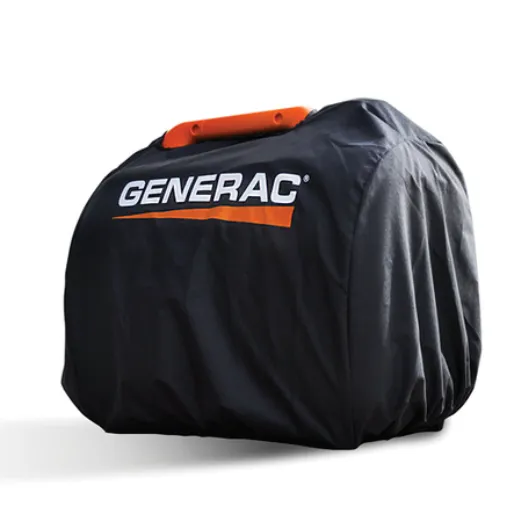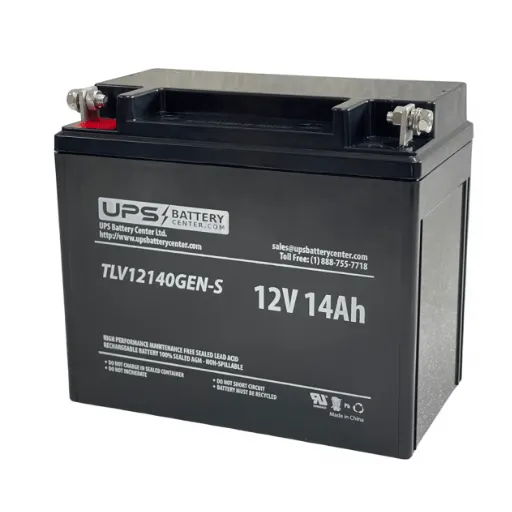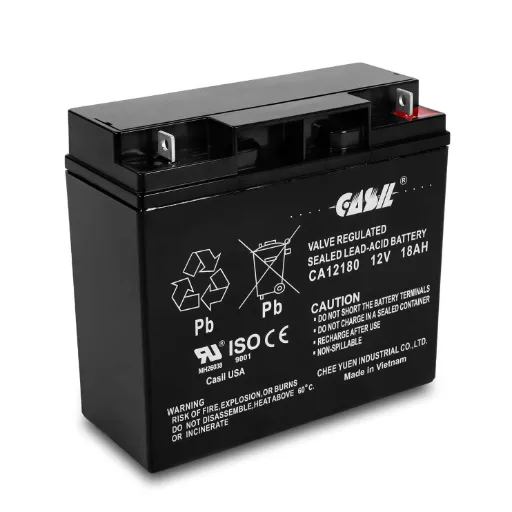Installing a standby generator for your entire home can provide unparalleled peace of mind, ensuring your household remains powered during unexpected outages. From the price of the generator itself to installation expenses, maintenance, and more, there are several factors to consider. This article will break down the costs associated with installing a whole-home standby generator, helping you understand what to expect and how to plan your budget effectively. Whether you’re looking for reliability during storms, power grid issues, or other emergencies, this guide will equip you with the knowledge you need to make an informed decision.
What is the Average Cost to Install a Whole House Standby Generator?
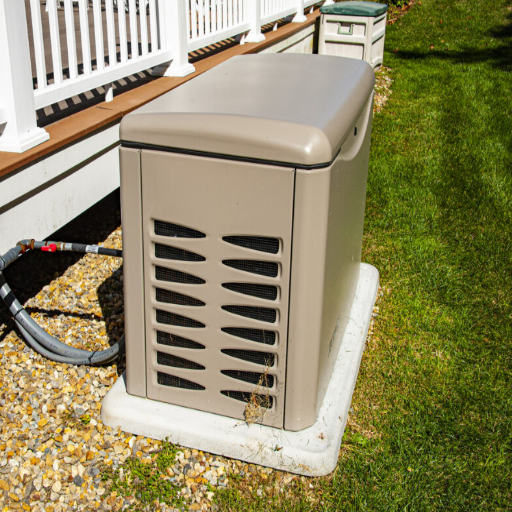
Typical Cost Ranges for Home Generator Systems
The price for installing a whole-house standby generator can depend on several factors which include the power output, brand, type, and installation complexity. On average, the installation can cost anywhere from $5,000 to $15,000, which will include both the generator unit and installation charges.
For smaller homes, entry-level systems are ideal and can go for $3,000 to $5,000. These low-end models often don’t come with professional installation or features like automatic transfer switches. In contrast, larger properties that use more energy will require advanced systems, which can go anywhere above $20,000. These systems come with upgraded features like, advanced monitoring systems, larger fuel tanks, and noise-reduction enclosures.
The labor, wiring, permits, site preparations, and everything related to the installation tends to cost between $500 to $5,000. The installation cost depends primarily on the scope of the work involved. There are many factors that determine the cost of installation. Some of them are geographical differences in labor charge, location of the generator with respect to the fuel and electrical connections, requirement of custom made concrete slabs, etc.
It is important to cost in regard to outages while budgeting. For budget estimation purposes, consider the amount of power your entire household consumes and work with a capable contractor. Preparing for these situations requires constanly evaluating your needs.
Differences Between Standby and Portable Generator Costs
The differences in cost between standby and portable generators are determined by a number of factors, including standby’s advanced features like automation and monitoring capabilities. Because standby generators are a permanently placed model, they include more costly components and often require professional labor. Therefore, the average standby generator purchase cost is from $5,000 to $10,000 and the installation costs add on an additional $1500 considering most installers charge by unit complexity.
Portable generators, on the other hand, are much cheaper with an initial purchase costing anywhere from $500 to $2,500. All that is needed is nominal effort to prepare and set them up, making it ideal for short-term circumstances. An notable mention is that unlike standby generators, portable generators have a limited power capacity and considerably shorter runtimes. This makes portable generators unsuited for highly energy demanding households, but a worthy option for those seeking long-term solutions.
Another significant factor is the cost of operations and maintenance. Consider the standby generators: they utilize natural gas or propane and provide a reliable source of power while minimizing fuel expenditures in the long run. In contrast, portable generators largely operate on gasoline, which, on the one hand, comes with greater variation in fuel costs and requires more frequent refueling. Furthermore, standby generators are designed with long-lasting features having sophisticated systems to operate on their own. They do, however, require periodic long professional servicing which affects shortterm costs and maintenance but provides enduring dependability. Unlike standby generators, portable ones require far less specialized care, but due to their design and application, have shorter expected life-spans.
As with everything else, the decision on which type of power generator one purchases has to solely do with standby power usage, multiple outlets, and the region of use. Flexible generators, which are much cheaper, are ideal for elementary tasks, whereas those requiring extended use would require a portable power source.
How Generator Size Affects Total Installation Cost
A generator’s size affects its total installation cost because of multiple factors like equipment costs, electrical system upgrades, and labor requirements. Commercial and large residential applications tend to use higher output generators, but their purchase price is also higher. Such units also require additional expenditure on installation like reinforcing wiring systems or upgrading transfer switches for safe wattage handling.
While smaller generators may be cheaper, they carry other hidden costs like alterations to existing electrical setups. Larger units also pose additional concrete pad stability site prep and ventilation system for exhaust and heat requirements which increase total costs. According to recent industry data, installation expenses of small portable generators can cost around $500 to $1,500, while larger standby generators may exceed $5,000 depending on complexity.
To ensure generator size is cost effective, power needs and site specifications need evaluation. Professionals recommend conducting a load assessment to determine suitable generator size for optimal performance without hefty installation costs.
What Factors Affect Standby Generator Installation Costs?
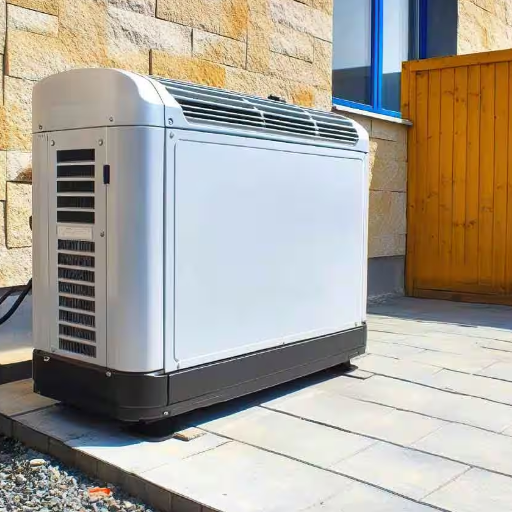
Generator Size and Power Output Considerations
The cost of installation will vary based on the size and power output of a standby generator. A generator’s capacity, measured in kilowatts (kW), must match the electrical load for seamless operation during outages. Smaller residential generators range between 7 kW and 22 kW, capable of powering essential systems such as refrigerators, HVAC units, and sump pumps. However, larger commercial or industrial generators can exceed 150 kW to accommodate the heavy electrical demands of extensive systems or machinery.
Consider surge (starting) wattage for appliances because it is often higher than running wattage. For instance, air conditioning units and well pumps might require significant power during the initial load phase. If a generator is unsized, their performance will be inadequate, usage will become damage-prone, and voltage will become unsteady. If the generator is oversized, there is an increase in spending on purchase price, fuel inefficiency, and overall cost.
Moreover, the latest developments in generator technology offer single-phase and three-phase power options depending on the needs of the different electrical systems. For choosing the ideal generator size and achieving a balance between efficacy and affordability, a comprehensive load evaluation, usually with the help of an expert electrician or professional installer, is fundamental. This assessment guarantees adherence to regional regulations, enhances operational productivity, and reduces wastage of funds on inefficiently large units.
Fuel Type Costs: Natural Gas vs. Propane vs. Diesel
Considering the cost effectiveness of fuel types for generators, one has to consider the volatility of the fuel market, the energy generated by the fuel, and even the necessities for fuel storage. Natural gas, having cleaner emission properties, cleaner combustion, and reduced maintenance costs, tends to combust more efficiently. Considering the infrastructure, natural gas is not only cheaper, but also considered to be more economical and environmentally friendly.
Long term storage makes propane a favorite add, and having more energy efficient properties enables it to store gasses with greater ease. Along with its use for long term construction, propane also caters to emergency standby generators which makes it ideal for non degrading fuel sources. On the downside, reliance on external tank construction may raise both logistical and installation expenses.
An increase in the price of diesel fuel tends to cause relative fluctuation in associated costs however shoutout should be given to its amazing energy properties. Diesel tends to hold more energy density than both natural gas and propane while providing more power output per gallon. Even though these systems best serve industrial infrastructures with long operational periods, diesel fuel tends to degrade over time, requiring proactive measures such as stabilizers to aid in storage.
Choosing a fuel type depends on evaluating operational needs along with costs and maintenance requirements, all while taking into account the region’s fuel services and market prices. Every alternative selection has distinct price ramifications and need specific plans crafted to suit them.
Transfer Switch Installation and Home’s Electrical Compatibility
The transfer switch is an important device for safely connecting a home generator to the electrical system. It allows for the safe and automatic changeover of power during outages, while also isolating uidate generators to prevent back feeding which can cause damage to the electrical system and pose harm to workers servicing the grid. An installation has to look carefully at the electrical load and make sure the home generator system is compatible with the intended setup and won’t overload the system.
In modern switches, an automatic mechanism or manual operation are options depending on user needs. Automatic systems like ATS (Automatic Transfer Switch) have great effectiveness at detecting power failure and turning on the generator. This is useful for critical infrastructure that requires non-stop power supply. Unlike ATS, Manual switches are user operated meaning they require constant input from the user, turning them into a useful cost-saving solution for less sophisticated systems and settings.
In integration with various medical instruments and machines, electrical compatibility also includes voltage levels as well as the amperage of the transfer switch with the house’s electrical system. Each transfer switch or its parts has its own set limitation or else risk safety and equipment ment breakdowns or malfunctioning which is a direct effect of overloading a switch or using one that is rated lower than the service panel’s limit. Proper grounding of the switch together with the generator is another very important step to also reducing risks of electrical shocks or failures of the system.
It can also be noticed that incorporating transfer switches into the domestic electric network does not only require electrical understanding, but also meticulous schematic planning on prioritization of circuits. Propelling such systems during blackouts infers, however, that other functions are put to halt so it becomes paramount that homeowners set intact crucial circuits encapsulated into these deal like refrigeration and heating for medical devices fueling them to be powered up during outages whilst ensuring alignment with the capabilities of the generator’s output.
What Ongoing Costs Should I Expect with a Whole-Home Generator?
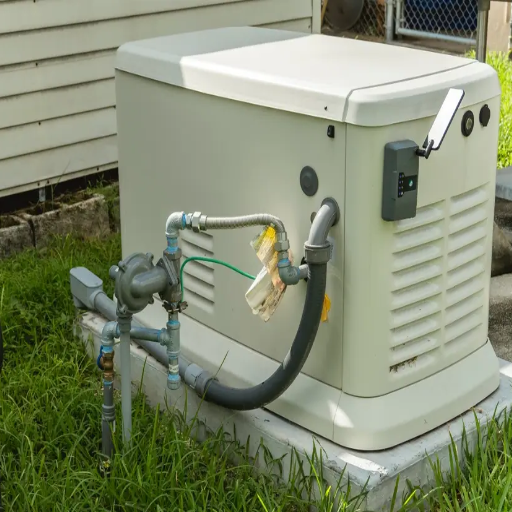
Generator Maintenance Requirements and Costs
Routine maintenance is essential for a home generator’s ongoing operational efficacy and dependability. While there are many suggested maintenance steps, it is usually necessary to verify and renew the air filter, spark plugs, and fuel filter, and change the engine oil as per the manufacturer’s guidelines. Depending on the unit and how often it is used, oil changes are required after 50 to 200 hours of operation. Moreover, every generator needs some testing to validate its performance with realistic loads. This not only includes periodic testing but also requires load bank testing.
The complexity of maintenance such as the size and type of the generator can alter the expenses incurred for maintenance. A common preventative maintenance contract costs between $200 to $800 based on whether the generator is natural gas, propane, or diesel powered. For example, diesel units tend to have higher maintenance expenses due to increased frequency of filter replacements and checks owing to fuel quality. Battery replacement owing to automatic transfer systems is another potential cost which can range from $50 to $200 depending on the kind of battery selected.
Additionally, homeowners should consider the possible setbacks in replacement of parts for long-term expenses. A case in point is the generator’s alternator or control panel. Regular use for 8 to 12 years warrants significant repairs or a complete overhaul of the control panel. Warranty compliance and system trustworthiness qualitative maintenance work together as an invested crown certified technician and authorized parts.
Participating in such plans helps in avoiding unplanned downtimes especially during times of critical need while meeting all the manufacturer’s requirements. Moreover, stategically timed maintenance works in unison with optimally operational performance and undergoing erosion control projects save costs in the long run.
Cost to Run a Standby Generator During Power Outages
The standby generator’s running costs during power outages is determined by fuel type, generator size, how much fuel it consumes, and how long the power is out for. Generally, standby generators run on diesel, natural gas, or propane. For example, diesel generators do have a high energy density, but they also come with a higher energy cost. A 20-kilowatt generator running on diesel consumes roughly 1.6 gallons per hour at 50% load.
However, natural gas generators become the better option since they are cheaper compared to propane or diesel. The downside is that they are only cheaper in some regions, which ultimately shuts off the supply from propane-powered generators that depend on price and availability. A typical 22-kilowatt propane generator requires about 2-3 gallons to be consumed per hour which is also at a moderate load.
Also, during an outage, the demand for power will affect fuel consumption. By limiting the use of household systems or devices, the generator load will be reduced and operation costs will be cut. Cost savings are furthered through minimal routine maintenance, optimal fuel storage, and care for equipment’s efficiency and lifespan. To accurately assess expenses, fuel pricing patterns alongside the specifications of the generator, such as model, load, and usage time, must be integrated into the evaluation.
Is Installing a Standby Generator Worth the Cost?
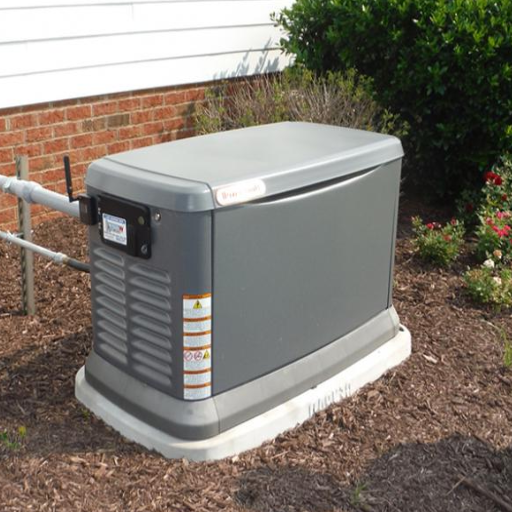
Cost-Benefit Analysis of Backup Power for Homeowners
When considering an appropriate standby generator, one must look at the cost-benefit ratio very carefully, taking into account all relevant factors that may positively or negatively affect value. The expenses associated with purchasing a generator include the unit’s cost, setup charge, and remodeling of the home’s electrical system, if needed. Depending on the features and capacity, modern standby generators may cost anywhere from $2,500 to $10,000 or above, with installation averaging an additional $3,000 to $5,000. All these initial costs during outages are, however, balanced out by long-term benefits. Homeowners’ likelihood of actually needing a standby generator is highly determined by the duration and frequency of outages in a particular geographic region. Regions that are likely to experience extreme weather conditions, like ice storms or hurricanes, will experience more prolonged outages, making the necessity of backup power more rational.
Fuel type and consumption also have a crucial impact on cost efficiency. Natural gas generators tend to be cheaper to operate than propane or diesel powered ones, especially where natural gas lines exist. A 20-kilowatt standby natural gas generator, for example, under half load, would consume roughly 200 cubic feet per hour and cost $2.50 to $3.50 an hour at average natural gas prices. While diesel generators are more economical when it comes to fuel consumption, they tend to dominate in per-unit fuel cost, maintenance needs, and overall maintenance severity, making them inefficient in the long run.
Moreover, the ability to maintain household functionality as well as property value during power cuts offers additional benefits that are hard to quantify. Powering medical equipment for some patients or running home businesses for some entrepreneurs require dependable electricity supply, so a reliable power backup system not only provides safety but also helps minimize costly work and health interruptions. More standby generators on the market mean that, as research shows, homes with built-in generators are likely to see an increase in resale value, canceling out some of the investment expenses. Regions with unreliable electricity supply make built-in backup power systems highly beneficial to prospective buyers and serve as powerful marketing tools.
With a fundamental understanding of such variables, homeowners can effectively evaluate whether a standby generator is suitable for their finances and operational needs while ensuring uninterrupted daily activities during power outages.
How a Whole House Generator Affects Property Value
Generators serve as a backup power source, making them a highly sought addition for real estate sales specifically in regions that experience power outages. From a real estate study, normally homes with standby generators reap ggreatly from the investment, recovering from about 50-70% of the installation price. The return greatly depends on factors such as the installation quality, integration with the house’s electrical network, and the generator’s power. This demonstrates how installing a household system greatly increases its value.
Besides offering guaranteed power in case of outages and potential appreciation in home value, a household generator system is extremely appealing to buyers in need of dependable energy security. This added value is especially appealing to buyers located in places with harsh weather or those suffering from aged electric power systems. Homes equipped with the latest technology such as efficient energy fuel transfer switches stands to gain a huge market edge.
Often, appraisal professionals consider the added convenience and resilience a generator brings when evaluating property value. Additionally, including proof of regular maintenance, such as maintenance logbooks and active warranties, helps to substantiate the generator’s value concerning the home. These advantages further justify the generator’s value beyond merely being a home upgrade and underscore why it should be viewed as a prudent investment when selling or assessing a property’s value.
How Can I Save on Whole House Generator Installation Costs?
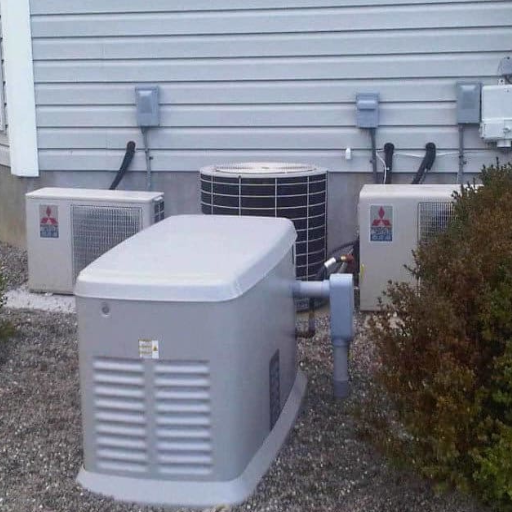
Tips for Finding the Right Generator Size for Your Needs
It is equally important for your pocket and your home to select the correct size generator for your residence. One part of the solution is figuring out what the total power requirement is for your home, which includes computing the wattages required to run various appliances, for example, refrigerators and heating or cooling units, lights, and pumps. Adding these values gives you a rough estimate of the baseline efficiency your generator output should deliver.
Another aspect of such a device you have to ask yourself is whether you want it to only support critical appliances, or the entire house. A generator for critical loads supports between 5,000 to 7,500 watts, whereas whole house generators may start from 22,000 watts depending on the consumption and size of the home.
Consulting a qualified electrician or a specialist in online load estimation tools can assist you in refining your selection further. That suggested calculations be exceeded by a generator’s capacity, to allow for expansion or additional appliances later on. Moreover, paying attention to the distinction between starting (surge) watts and running watts is very important because many appliances need more power to start than to stay running. An example of this is an air conditioner whose power surging during startup exceeds its running power.
When purchasing a generator, remember to take into account the fuel type and its availability. The efficiency and dependability of natural gas, propane, or diesel powered generators differs based on region and household needs. Evaluating these pieces systematically alongside dependable information allows homeowners to make tailored and informed decisions to address their energy requirements efficiently.
When to Install a Generator to Minimize Costs
The timing of off-peak seasons, like late spring and early autumn, is ideal for installing generators. This is because off-peak periods usually have lower demand for generators and related services. Generators also tend to cost less during the off-peak periods too. Thus, delays in the start date for generator installation are avoided and costs are minimized.
As claimed by industry trends, the installation of generators during home improvements also provides advantageous optimizations. For instance, preemptive installations during construction and renovations save on extra labor as everything is done in bulk. These trends include monitoring the weather as well. For example, installing during the storm season or just before extreme weather conditions hits helps prevent last-minute price surges.
Local incentives also need to be evaluated when doing efficient financial planning. Some regions provide ample opportunity and savings especially if a standby generator is hooked with a renewable fuel.
References
Frequently Asked Questions (FAQs)
Q: What are the main cost factors of installing a whole-home generator?
A: The main cost factors of installing a whole-home generator include the generator unit price (typically $2,000-$20,000 depending on size and brand), installation labor costs ($1,000-$5,000), electrical and gas line work, permits, and site preparation. The size generator you need (typically 10- 25 kW for most homes) significantly impacts total cost, as does whether you run on natural gas or liquid propane, which may require additional infrastructure.
Q: What is the average whole-house generator cost for a typical home?
A: The average whole-house generator cost ranges from $7,000 to $15,000 fully installed. Smaller homes may get by with a 10- 12 kW system ($7,000-$10,000 installed), while larger homes requiring 20+kW systems can expect to pay $12,000-$20,000 or more. This includes the generator unit, transfer switch, installation labor cost, permits, and basic site preparation.
Q: What size generator do I need for a whole-house backup generator?
A: For a whole-house backup generator, size requirements typically range from 10kW to 25kW, depending on your home’s square footage and electrical demands. A 10- 14kW generator can power essential circuits in a small to medium home (under 2,500 sq ft). Medium-sized homes (2,500-3,500 sq ft) typically need 14- 20 kW. Large homes (3,500+ sq ft) or homes with multiple HVAC systems generally require 20- 25 kW or larger generators. Your home generator installer should perform a load calculation to determine the exact size generator you need for reliable backup power.
Q: What is the total cost of ownership for a whole-home generator?
A: The total cost of ownership for a whole-home generator extends beyond the initial purchase and installation. Beyond the upfront cost of $7,000-$20,000, you should budget for annual maintenance ($200-$500 per year), fuel costs during operation, potential repairs, and eventual replacement (generators typically last 10-20 years). Natural gas generators typically have lower fuel costs than propane. Over 20 years, expect the total cost of ownership to be approximately double the initial installation cost.
Q: What affects the labor cost to install a whole-house generator?
A: Labor cost to install a whole-house generator typically ranges from $1,000 to $5,000 and is affected by several factors. The placement of the generator can significantly impact costs – installations requiring long runs of gas line or electrical wiring increase labor hours. Site preparation needs, like concrete pads or landscaping modifications, add expenses. The complexity of connecting the generator to your home’s electrical system, especially when installing automatic transfer switches, increases costs. Additionally, local permit requirements, accessibility issues, and regional labor rates all affect the final labor cost of installing your backup generator.
Q: Is it cheaper to run a whole-home generator on natural gas or liquid propane?
A: Natural gas is typically cheaper to run a whole-home generator than liquid propane in most regions. Natural gas is supplied continuously through utility lines, eliminating fuel delivery and storage concerns. The cost of natural gas averages $15-30 per day of continuous generator operation, while propane might cost $30-60 for the same runtime. However, if natural gas isn’t available at your property, the cost of installing a gas line ($500-$2,000+) can offset these savings. Propane requires tank installation ($500-$2,000) and regular refilling, but may be the only option in rural areas. Your generator installer can provide specific cost comparisons based on local fuel prices and your generator’s consumption rate.
Q: Do I need to replace my whole-house generator after a certain period?
A: While you don’t need to replace a whole-house generator on a strict schedule, most quality standby generators have a typical lifespan of 10-20 years with proper maintenance. Factors affecting longevity include frequency of use, maintenance consistency, environmental conditions, and build quality. Units that run frequently during outages will wear out faster than those used occasionally. Regular maintenance by a qualified generator installer can significantly extend the lifespan. When repair costs start approaching 50% of a new unit’s price or parts become unavailable, replacement is typically recommended. Budget for eventual replacement when calculating the total cost of ownership of your backup power system.





